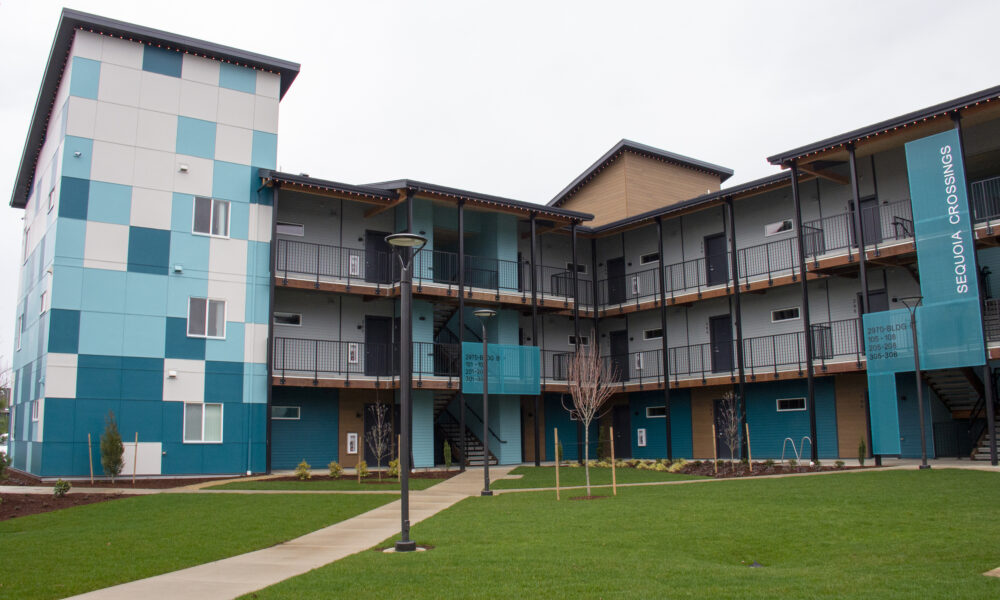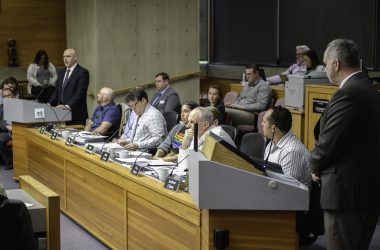Working two jobs doesn’t mean someone can afford rent in Salem.
It’s a problem Lynelle Wilcox sees at the Safe Sleep United women’s shelter.
A rent increase, a spouse’s death or the high cost of signing a lease can drive someone into homelessness.
“There’s not enough fast housing that’s affordable to get you into a place,” said Wilcox. “So you end up on the streets, or in your car, or at a shelter. And you’re priced out of the market before you even start.”
At its most basic, affordable housing means a home someone can pay for comfortably. That doesn’t require government involvement or subsidies. It could mean living in a house with the mortgage paid off, or renting from a mom-and-pop landlord who keeps prices low.
But as Salem and Oregon contend with more people living in shelters, tents and cars, affordable housing has become a key issue for local and state government.
The state has spent millions in recent years to subsidize new developments. Salem forgives hundreds of thousands of dollars in property taxes each year for developers who are willing to set rents lower.
Gov. Tina Kotek has made building new housing a primary focus of her administration.
Mayor Chris Hoy sees new housing projects as key to the city’s efforts to fight homelessness.
At a recent ribbon-cutting for Sequoia Crossings, a new Salem Housing Authority development, Hoy said shelters and other homeless services only function when people have somewhere to go.
“Places like Sequoia Crossings make all of those other services work. They’re what people are working toward once they’re getting off the street and out of the tent, either into a micro shelter, into our Navigation Center, ready for the next step,” he said.

What is affordable housing?
The concept of affordable housing is simple: homes where rent is low enough that a family can still afford food, gas, medical bills and other necessities.
Housing advocates and government agencies generally agree that a family’s housing should cost no more than one-third of their income.
In practice, government agencies have their own definitions for affordable housing that depend on the tax breaks or subsidies given to a development.
Government-supported housing can be publicly or privately owned. Such housing often has rent below the market rate because of public money provided to developers, landlords and renters.
Rent limits, set by the state, factor how much someone makes each month with the type of tax credits the property receives.
Common rents for regulated affordable two-bedrooms apartments in Salem range from around $1,131 to $1,508, depending on the requirements of the funding used to develop the project.
By comparison, a market rate two-bedroom apartment can go for as much as $2,000 per month.
Affordable housing prices can still be out of reach for many low-income renters without another government subsidy: a housing voucher that pays a portion of their rent.
“You need a housing voucher, you need some sort of housing subsidy in order to make ends meet,” Wilcox said. “It’s just not happening for so many people.”
Some affordable housing, like at the newly opened Sequoia Crossings, ensures tenants spend only a third of their income on rent and utilities – which can make rent payments as low as $500.
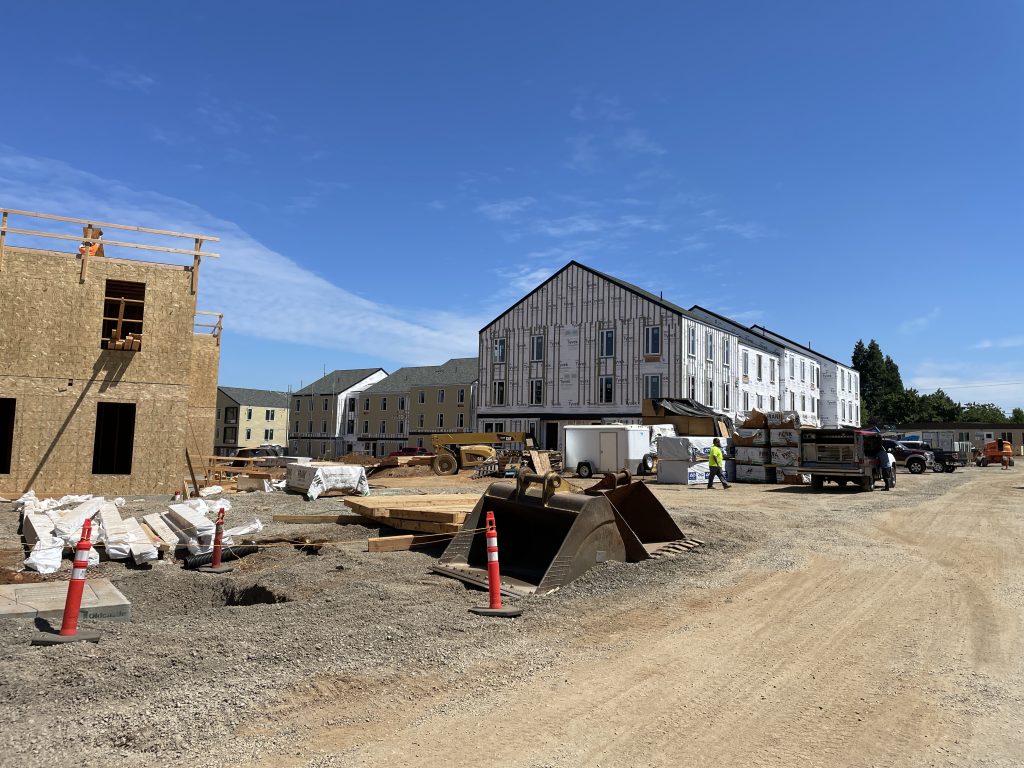
How much affordable housing does Salem have?
State and local agencies track only projects that meet government definitions for affordable housing.
By that measure, Salem is in a boom for building new affordable housing.
Salem had 1,379 affordable units across 14 projects as of June 2023. The vast majority, nearly 1,100, have been added in the past five years, according to Oregon Housing and Community Service data.
It’s a small fraction of the city’s total rental inventory. Census data in 2022 found about half of all housing in Salem is rented. The city is home to more than 66,000 households, so tens of thousands of families in Salem have to make do with the search for a house or apartment they can afford on the open market.
Salem leaders celebrated the opening of Sequoia Crossings on a rainy day in late January with the cut of a blue ribbon. It’s the city’s latest affordable housing development, adding 60 apartments for formerly homeless tenants.
Sequoia Crossings joins Salem’s affordable housing catalog, which includes properties like Mahonia Crossing, Orchard Park and Evergreen Park Apartments. Properties are owned by public entities such as the Salem Housing Authority, a nonprofit or private developers.
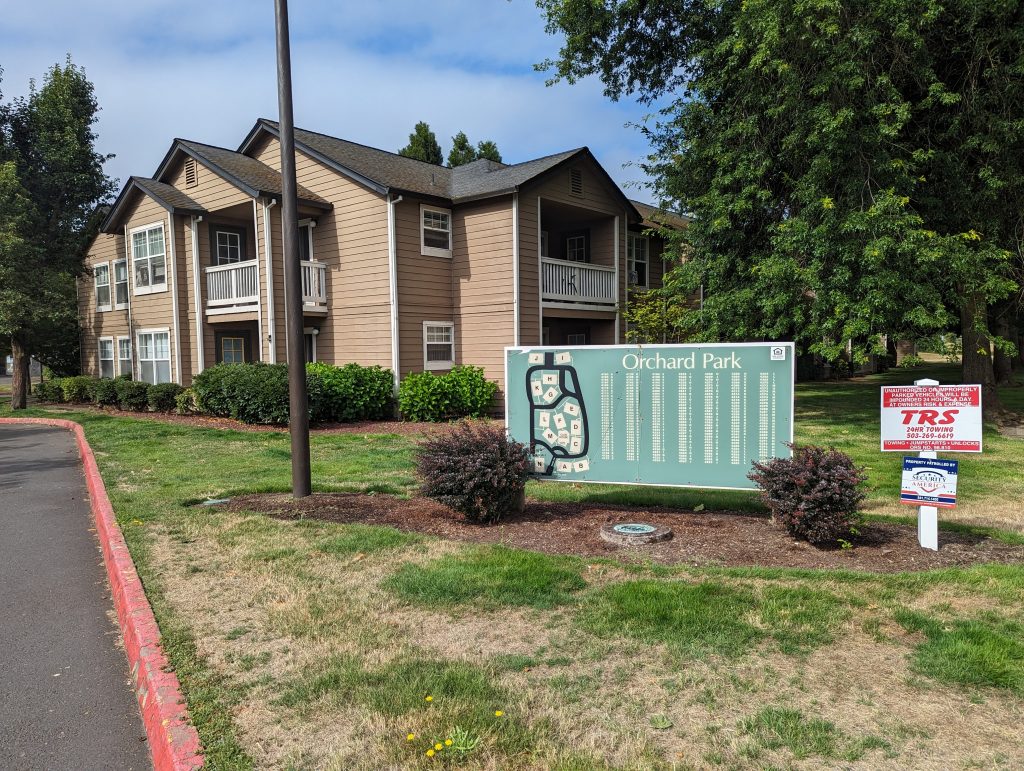
Why is affordable housing being built?
Salem has had affordable housing units since the early 90s. Early developments focused on helping elderly or disabled people and others with fixed incomes.
Orchard Park Apartments, located in the Northgate area, is one of the city’s oldest and largest developments, with 224 affordable units, built in 1993.
With rents outpacing wages, more and more working people and families are struggling to afford a place to live — increasing the need for more affordable apartments.
“I think it’s becoming more prevalent because the rents have increased and the wages haven’t,” Wilcox said. Seniors and people with disabilities on fixed incomes are increasingly unable to find another option if they can’t keep their current home.
Hopeful applicants often spend three to five years on waitlists to move into the limited affordable options in the area, according to the Salem Housing Authority that manages several properties.
How is the government involved?
The city and state have invested heavily in developing affordable housing. Goals include helping families who may otherwise become homeless, or giving people who are homeless a place to move into.
“We’ve committed to affordable housing development here in Salem, and we do that sometimes on our own peril, because the only way we can incentivize these projects is through cutting our property taxes which means cutting the revenue to deliver the services,” Mayor Chris Hoy said at the Sequoia Crossings opening in January. “But it’s worth it because this is a priority.”
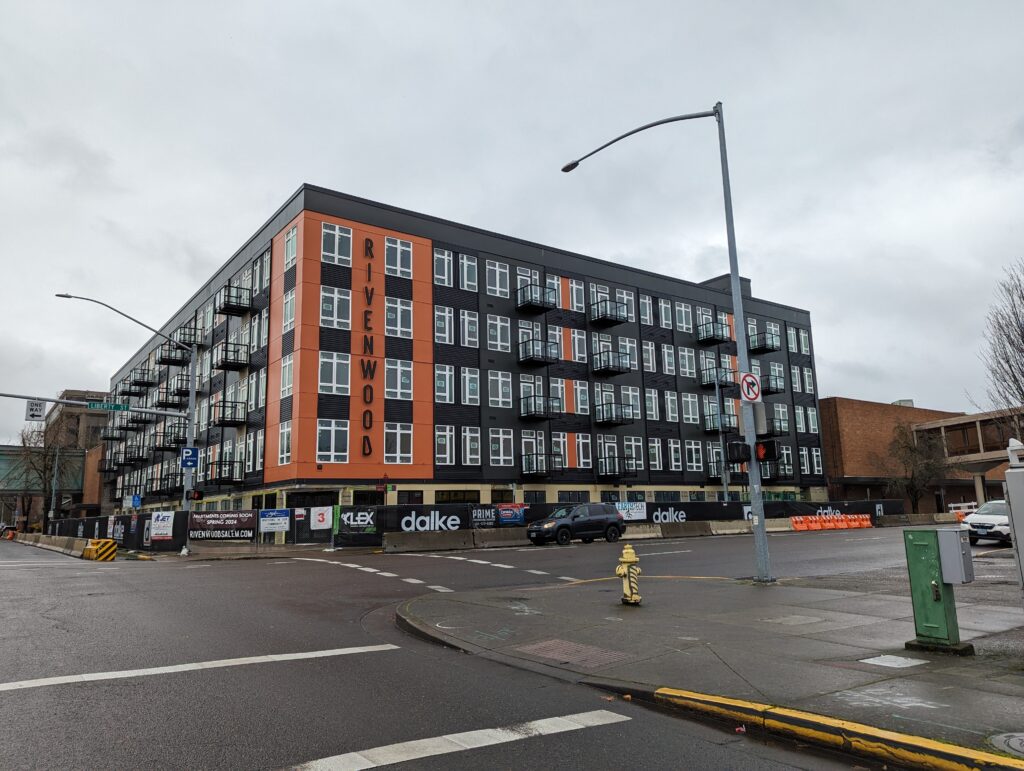
$71,521 through a city program to incentivize multifamily housing, with 10 of the apartments designated as affordable housing. (Rachel Alexander/Salem Reporter)
Tax incentives
The city has tax breaks and incentives for developers. Most work by allowing developers to avoid property taxes in exchange for keeping rents below set levels.
Other local governments that receive property taxes, like the Salem-Keizer School District or Marion County, can also vote to exempt developments.
Seven developments are currently in the city’s tax exemption program for downtown developments, which comes with a 10-year tax break.
Salem forgoes $235,015 in property taxes per year on those apartments.
Two construction phases of the Pringle Square South Block Apartments downtown are receiving the largest city tax break: a combined $88,262 a year, with expirations in 2025 and 2027.
Affordable housing owned by nonprofits anywhere in Salem city limits is also eligible for tax breaks. To qualify, tenant income is capped at $50,220 for a family of four.
Fourteen properties are actively getting city tax breaks through that program. Salem didn’t collect a total of $232,505 in property taxes this year on those developments.
Most of that was to the Cornerstone Apartments owned by Community Resource Trust at 2540 Rose Garden St. N.E., which received a $180,052 city tax break this year.
The state separately administers low-income housing tax credits. Developers get a break on their federal taxes if they set aside four in ten units for people earning below 60% of the median income.
Vouchers
Some government programs help tenants by paying a portion of their rent.
The Salem Housing Authority has three major programs to help people afford their housing, which together distributed $28 million last year, according to Melanie Fletcher, assistant housing administrator of operations. Most of that money comes from the federal government.
One form of support comes through housing choice vouchers, commonly known as “Section 8,” where the federal government pays landlords directly. It’s intended to help low-income families, elderly people and people with disabilities.
Last year, the average monthly payment to households was $805. The Housing Authority distributed over $26 million last year toward tenants’ housing costs through vouchers. This amount typically goes up when rent does. Fletcher said last year was a sharp increase from 2022’s average monthly spending of $761 per tenant.
Two smaller voucher programs cover rent for people who are homeless, and disabled people. The housing authority spent about $1.5 million on those vouchers last year.
It’s hard to get a housing voucher. The waitlist for Section 8 housing vouchers can last between 2-5 years, and the last time it opened was in May 2023, for a brief period of lottery applications.
Fletcher said they’re waiting to hear what this year’s funding will be, and it will likely be over a year before the list opens again.
“A voucher is gold. Everybody’s waiting to have a voucher, to have that necessity. But even when you have it, finding a place to rent that fits the voucher criteria is usually hard,” Wilcox said. “The supply is still not meeting the demand.”
How does an affordable housing development take shape, and where does the government get involved? Our second piece in this series will explain the process, looking at Mahonia Crossing, a large privately developed affordable apartment complex in Salem’s South Gateway neighborhood.
Contact reporter Abbey McDonald: [email protected] or 503-575-1251.
SUPPORT OUR WORK – We depend on subscribers for resources to report on Salem with care and depth, fairness and accuracy. Subscribe today to get our daily newsletters and more. Click I want to subscribe!
Abbey McDonald joined the Salem Reporter in 2022. She previously worked as the business reporter at The Astorian, where she covered labor issues, health care and social services. A University of Oregon grad, she has also reported for the Malheur Enterprise, The News-Review and Willamette Week.

